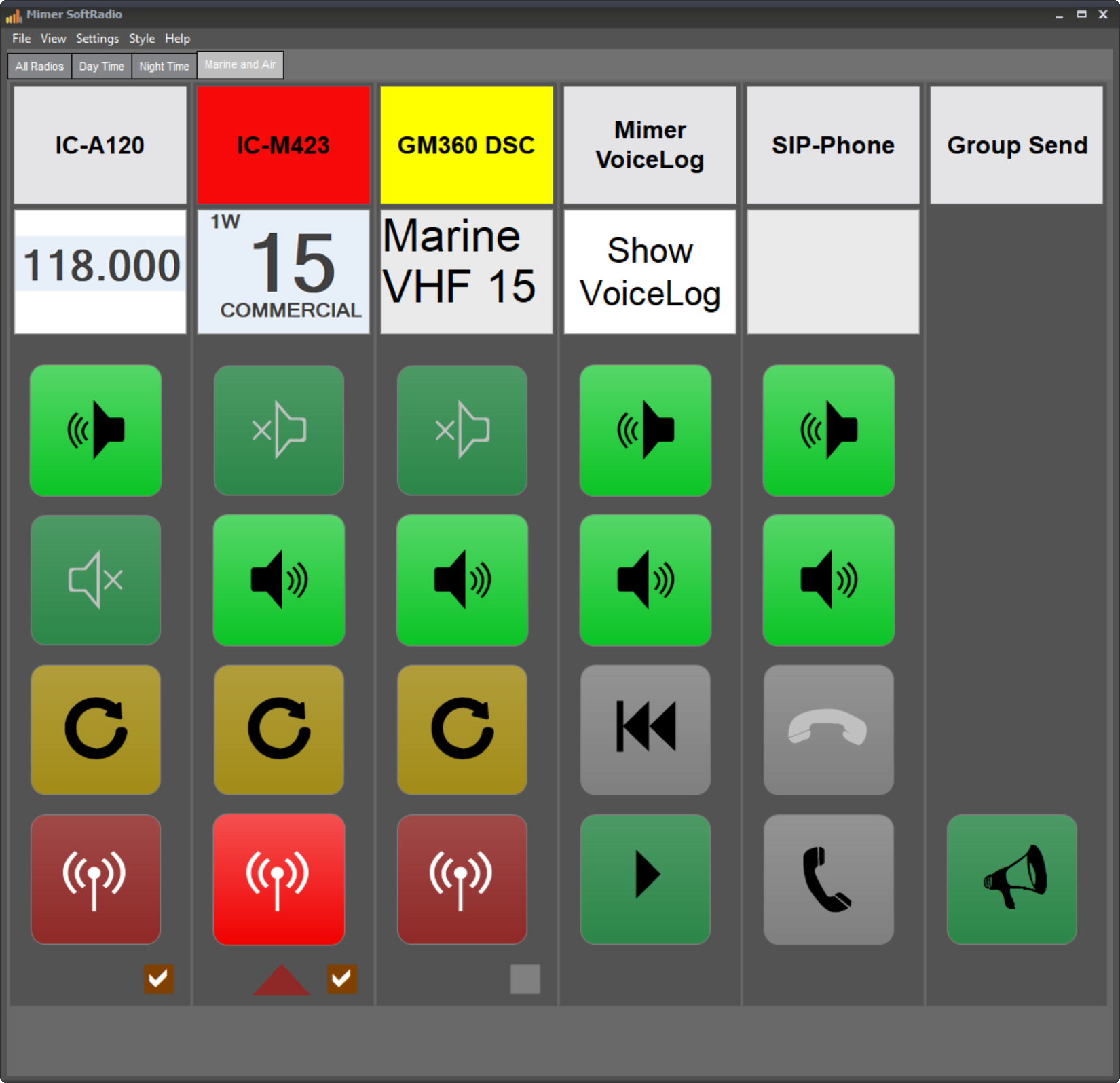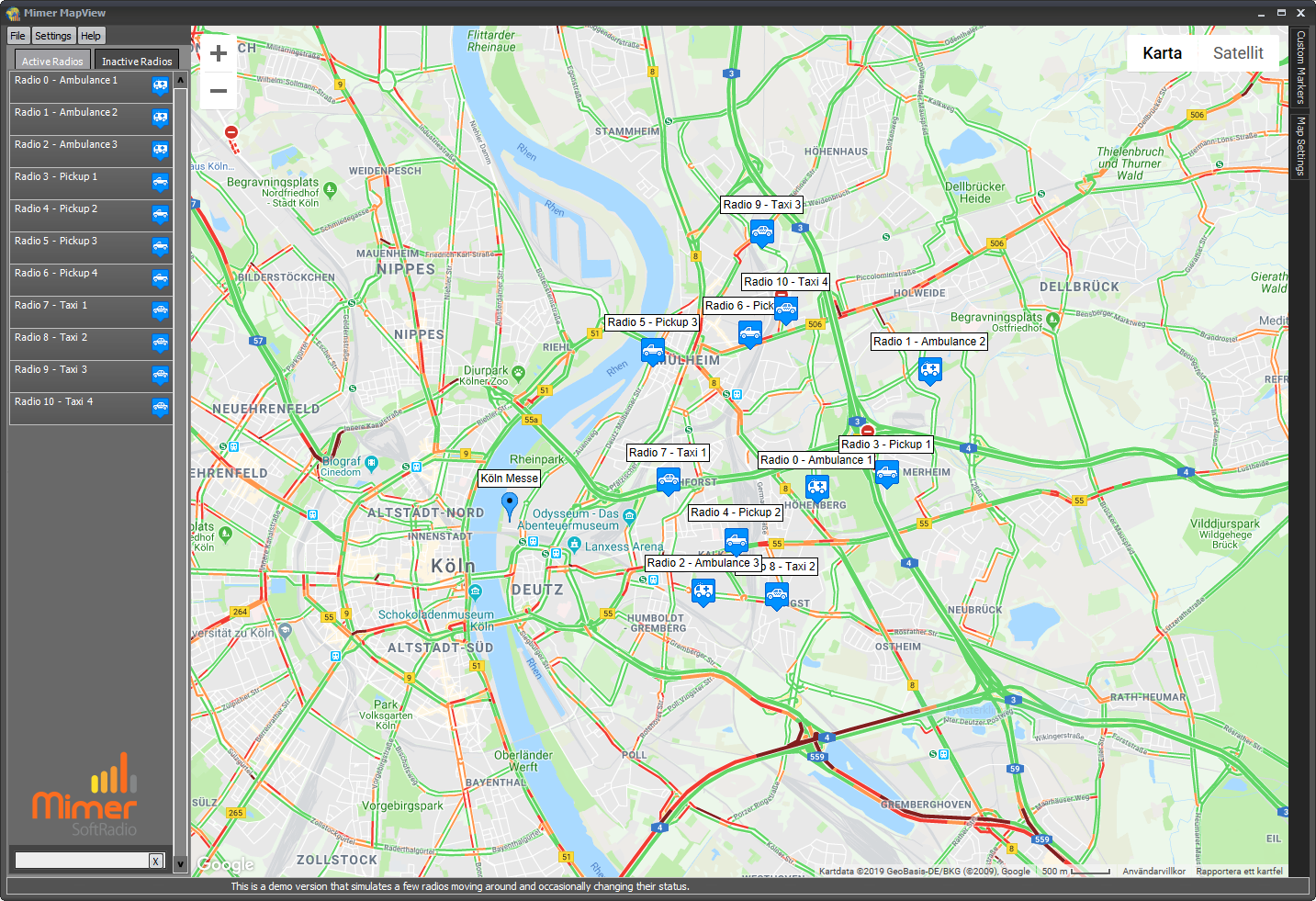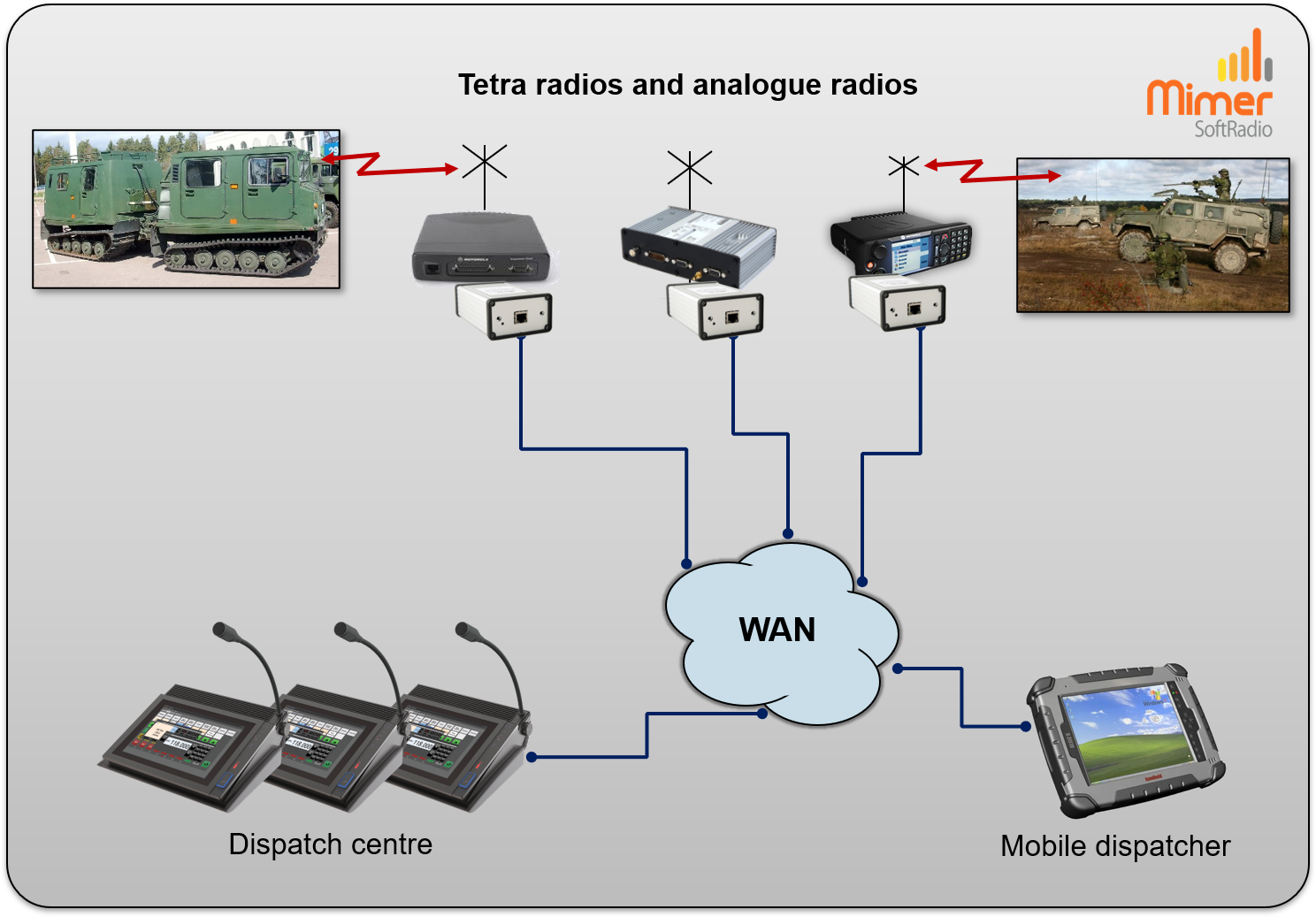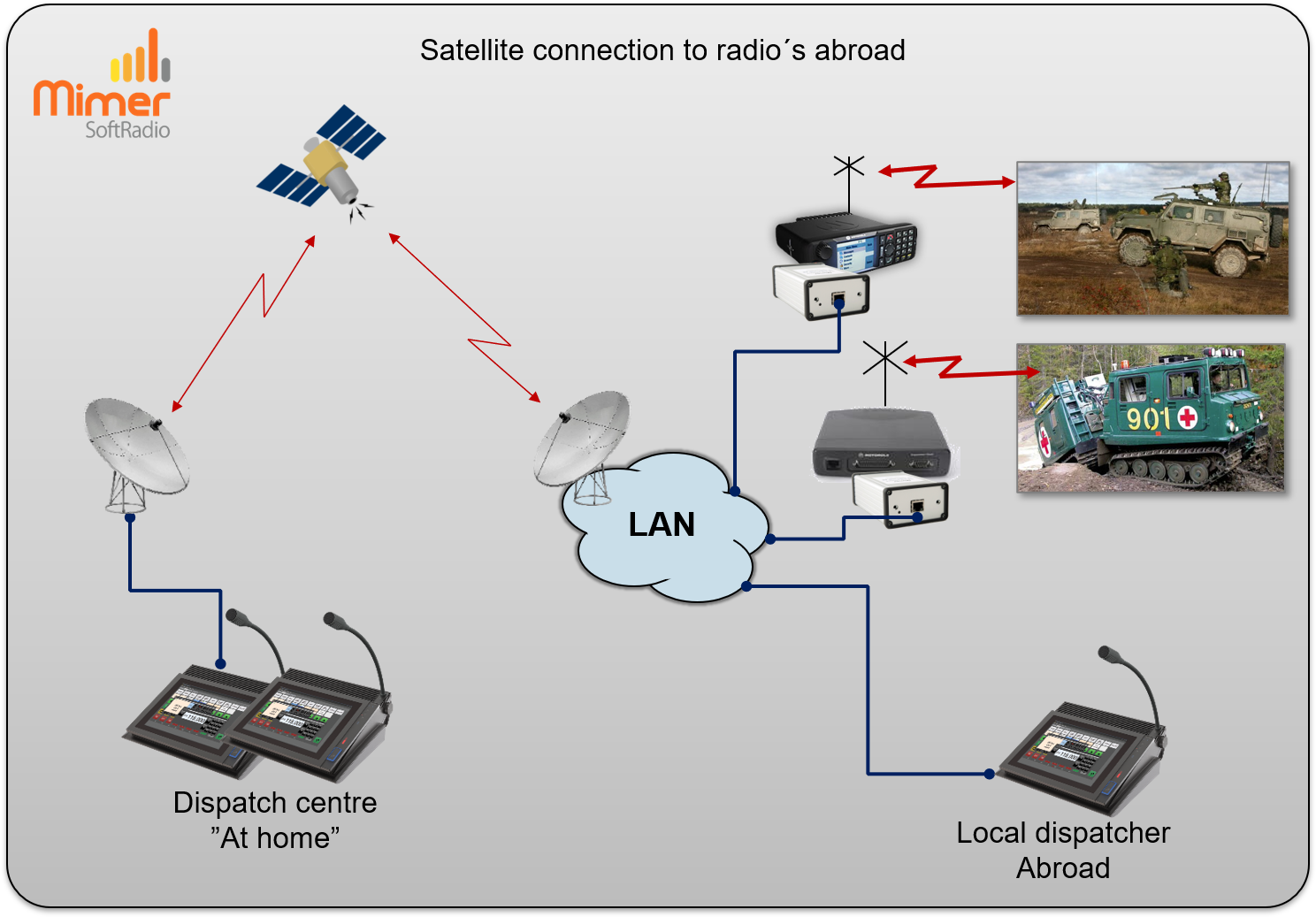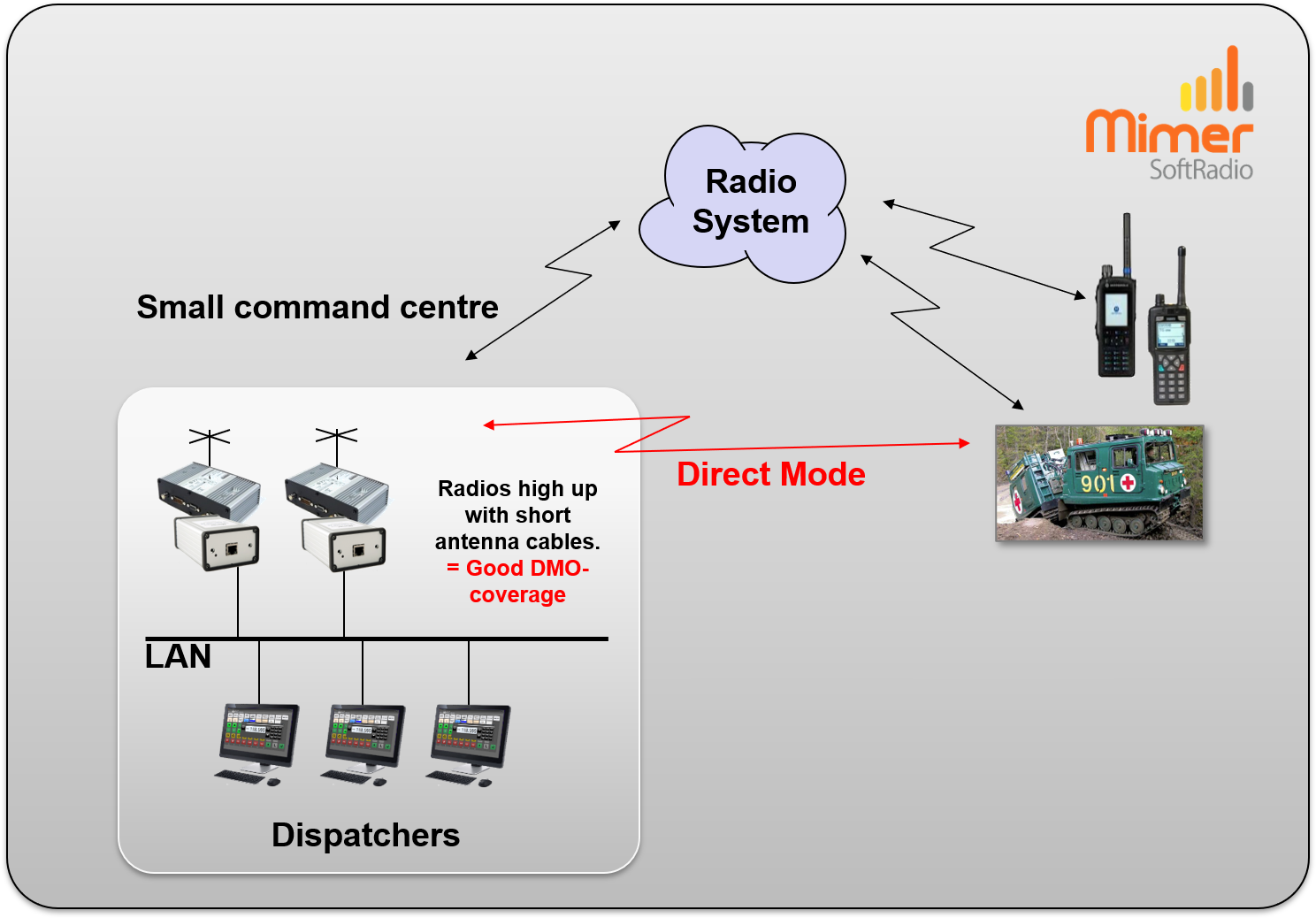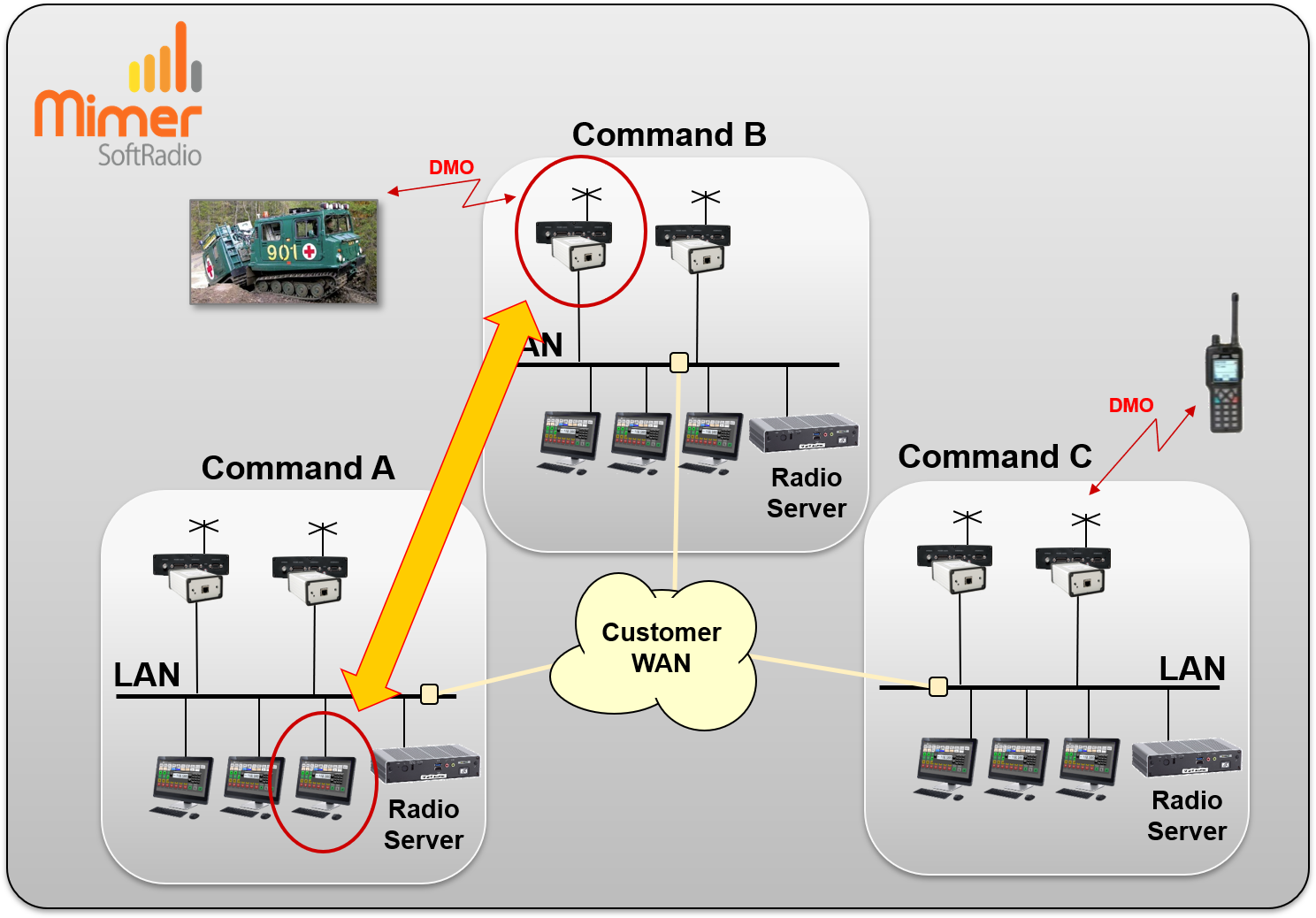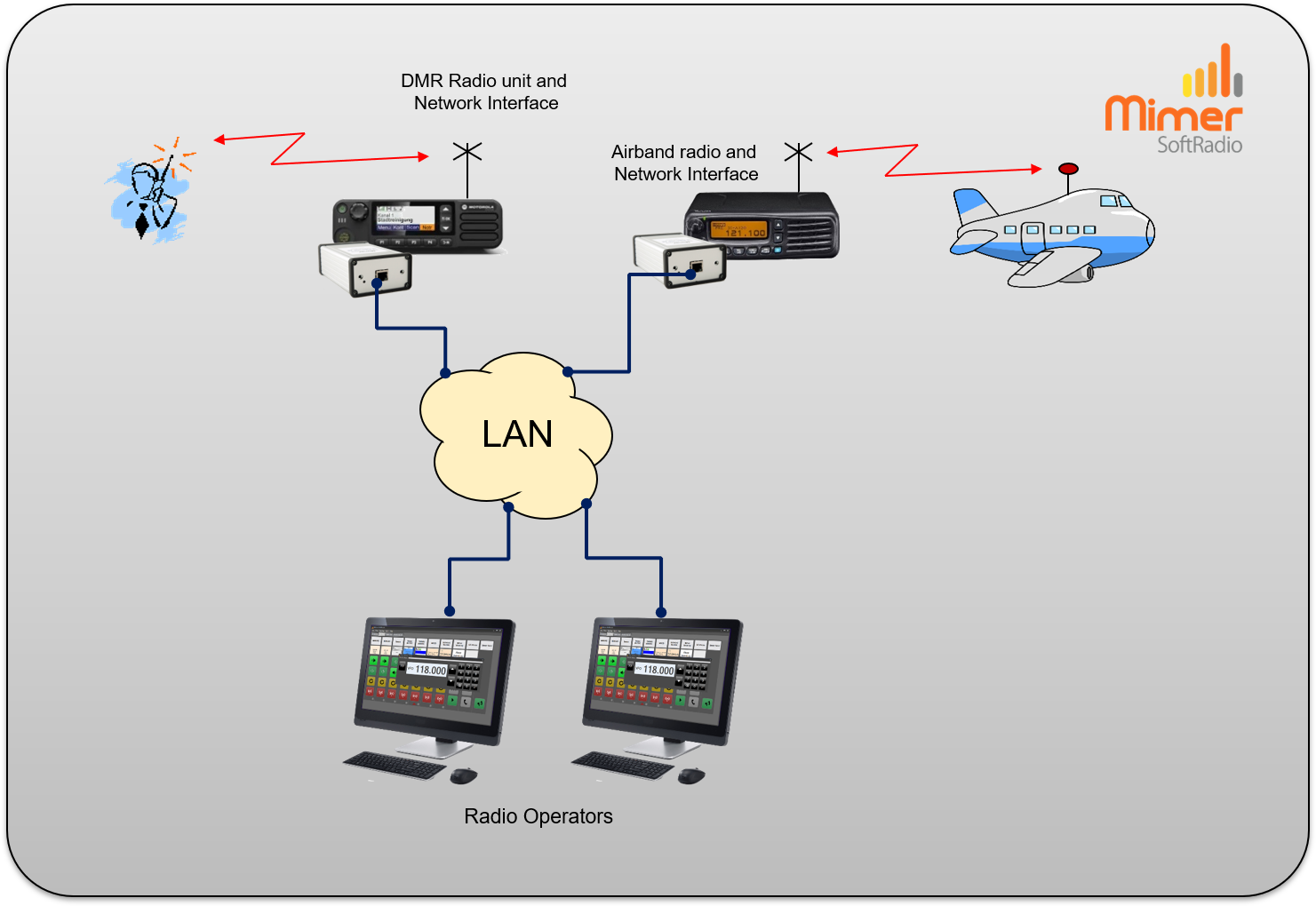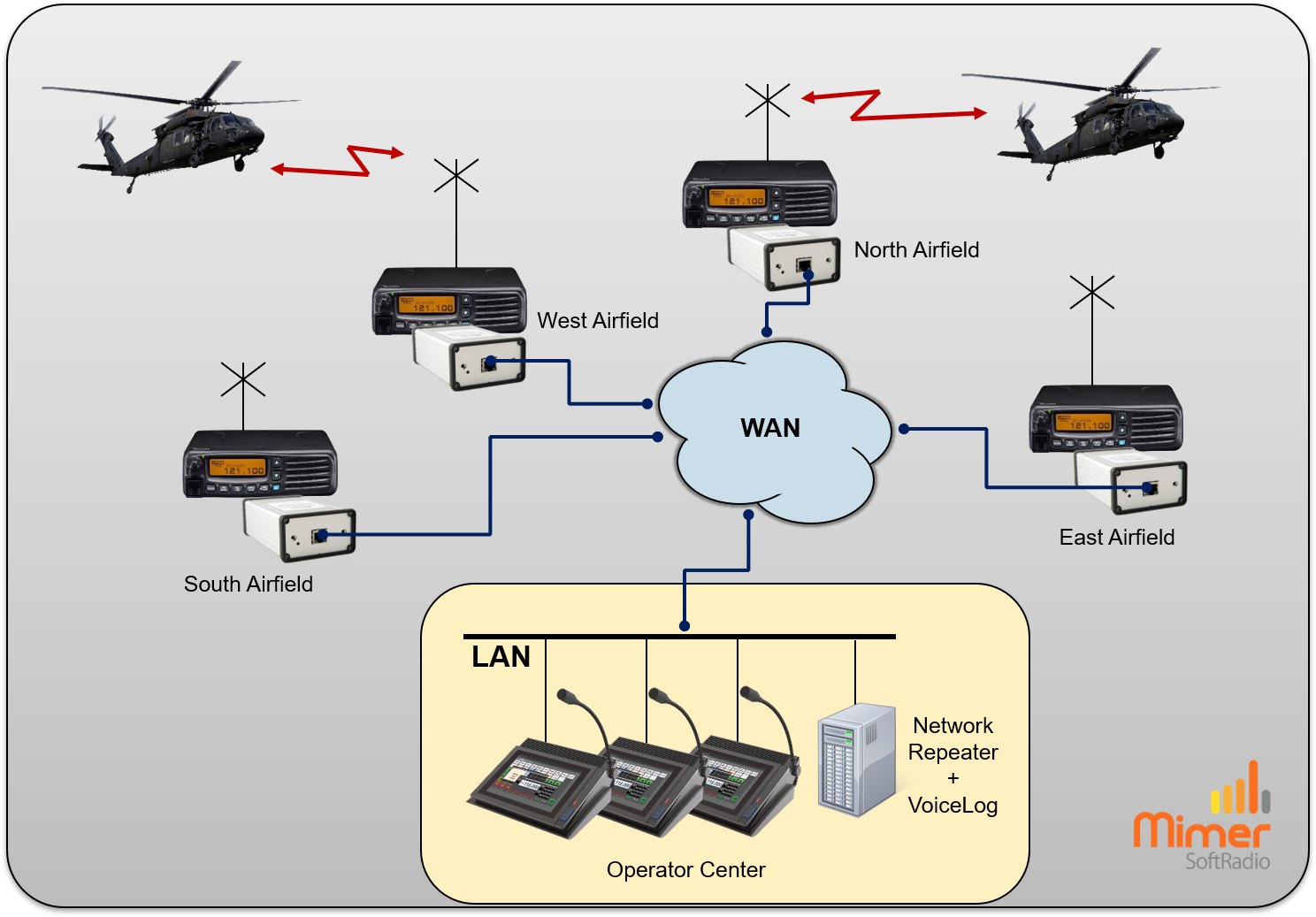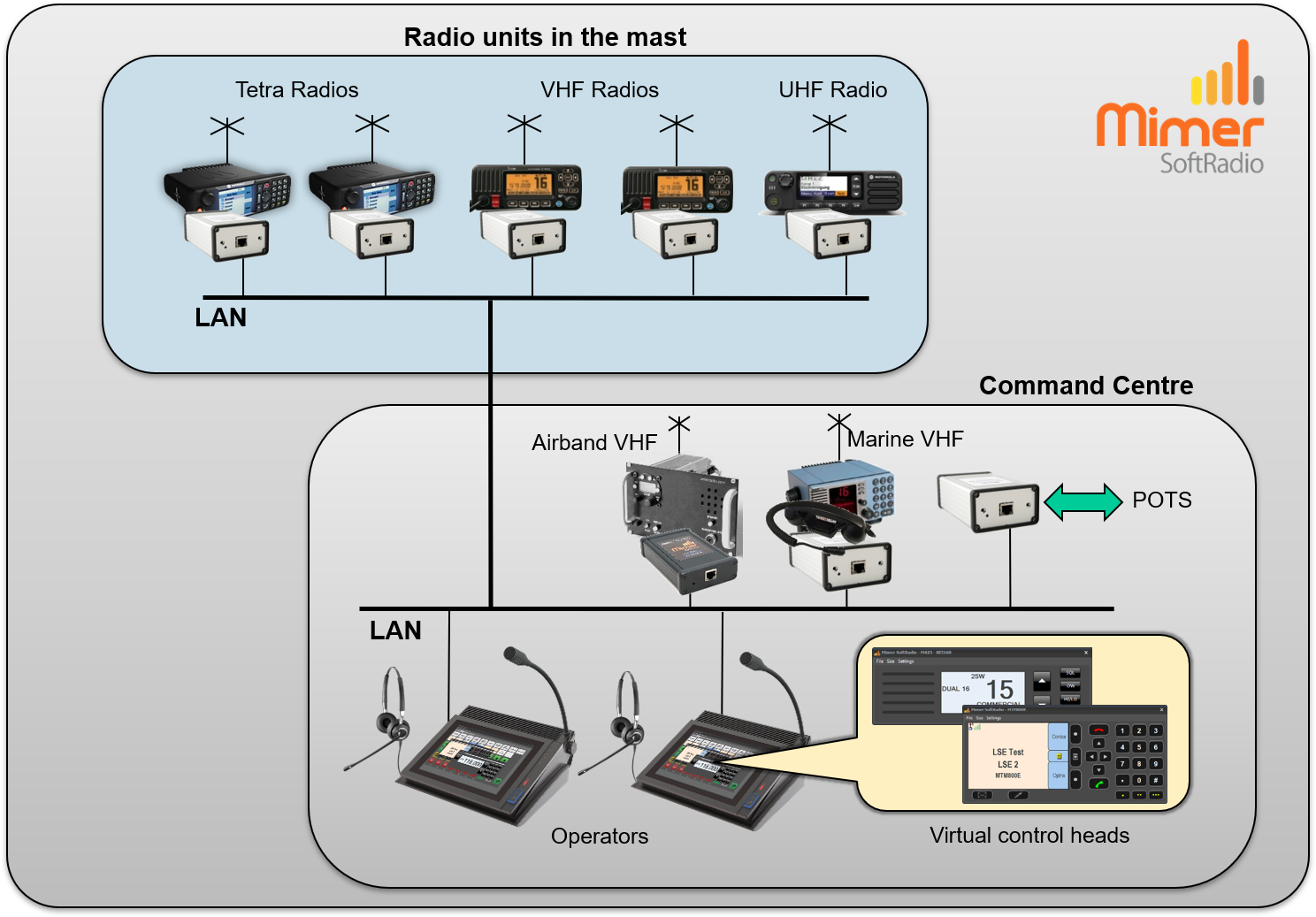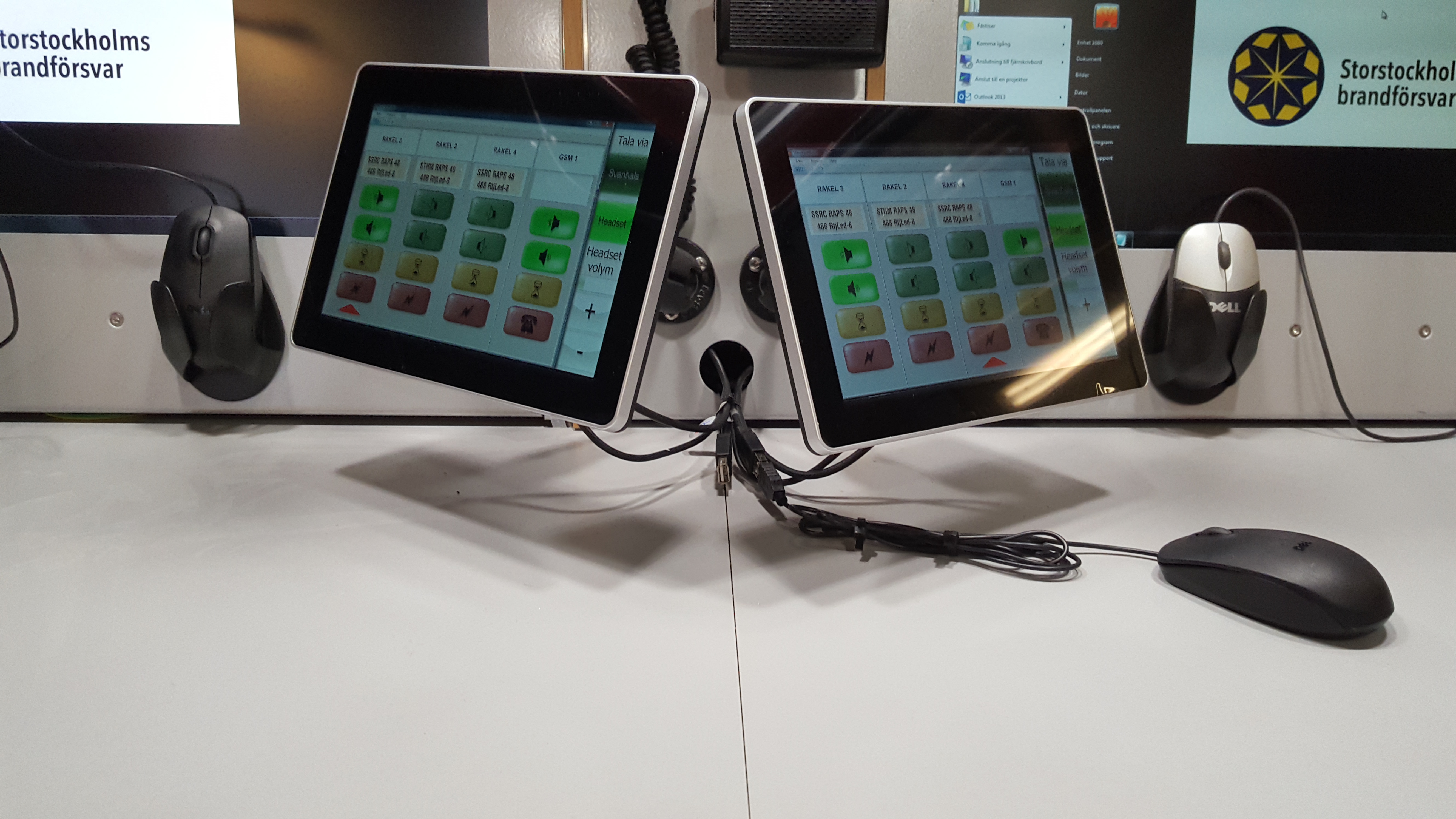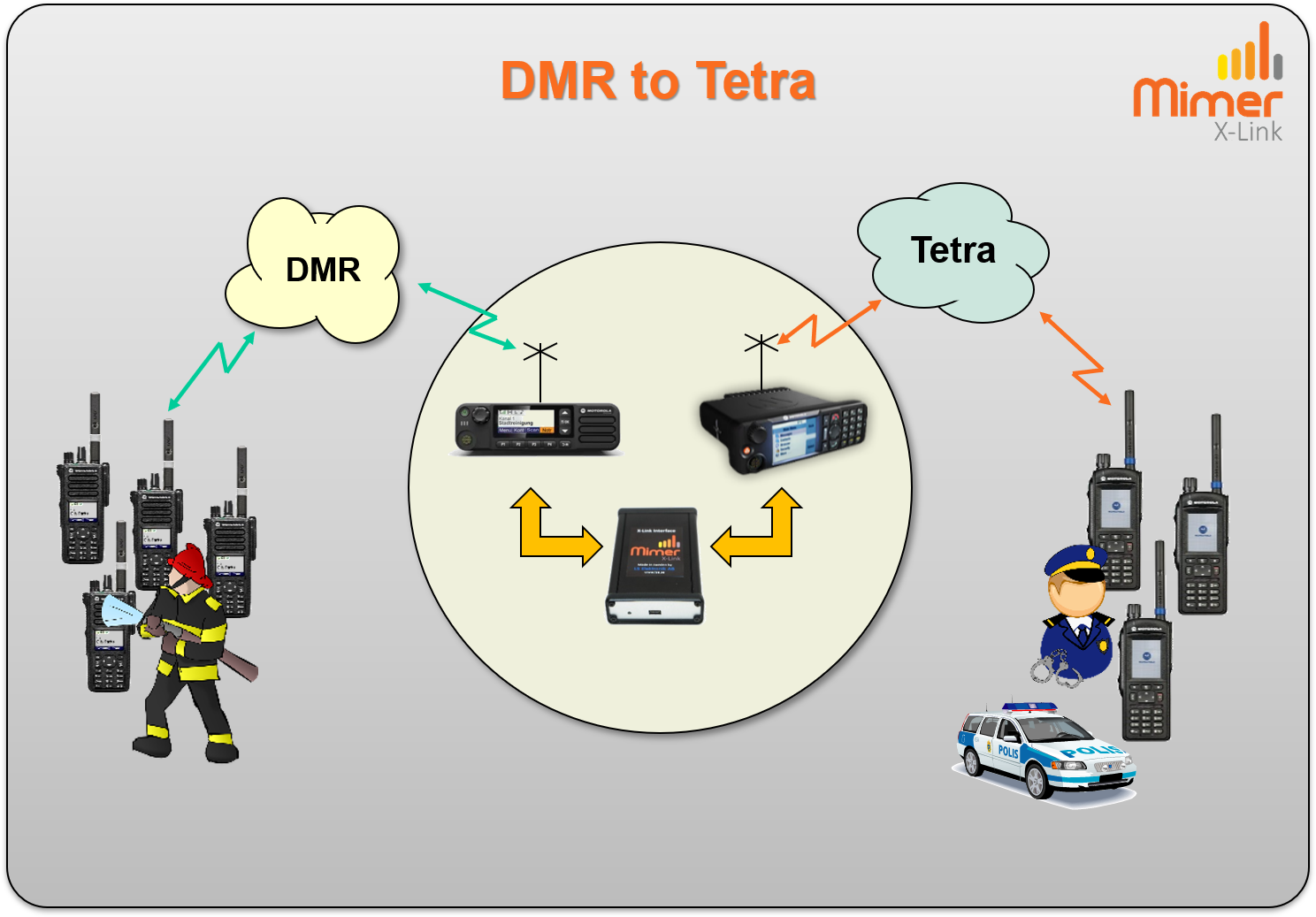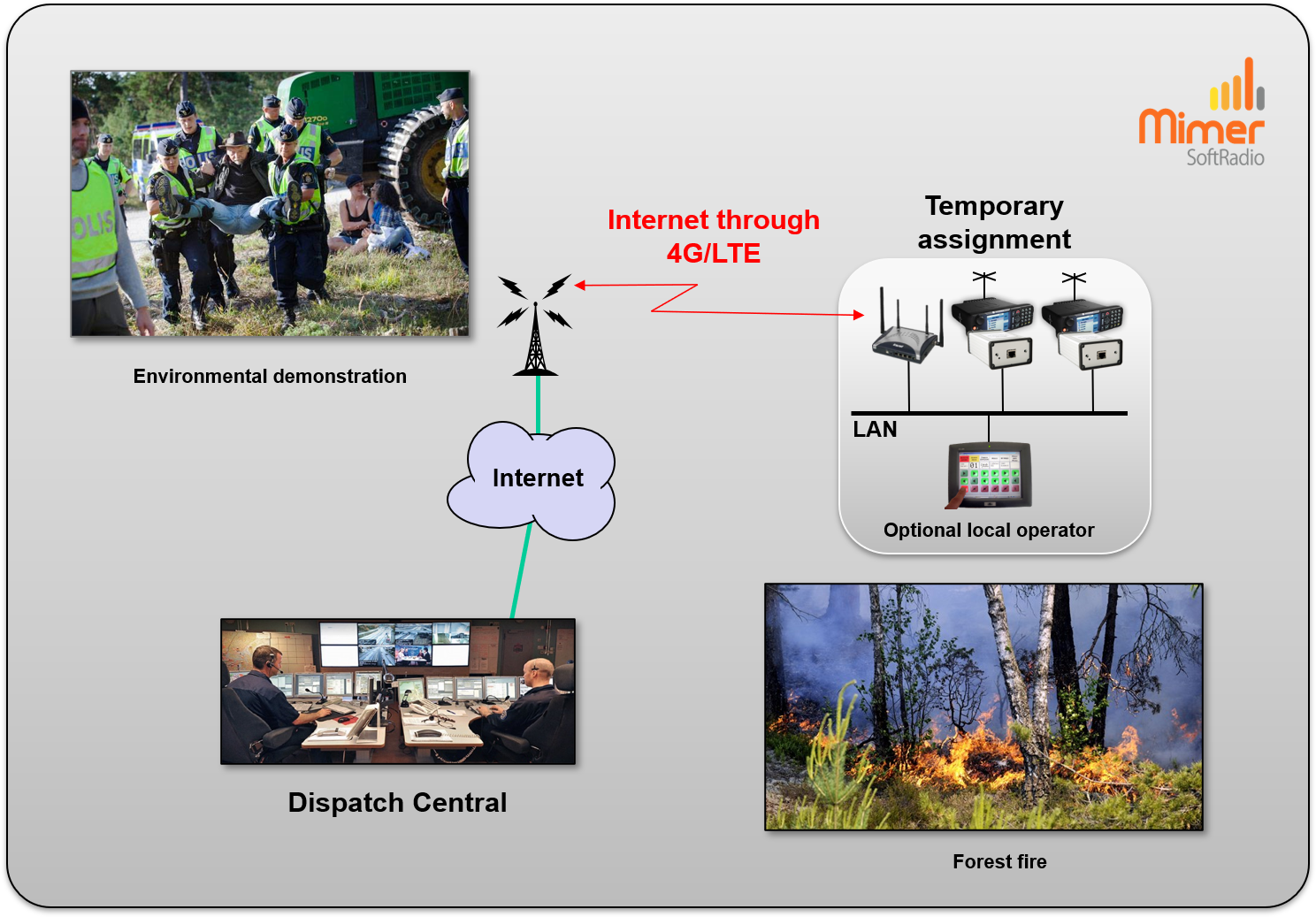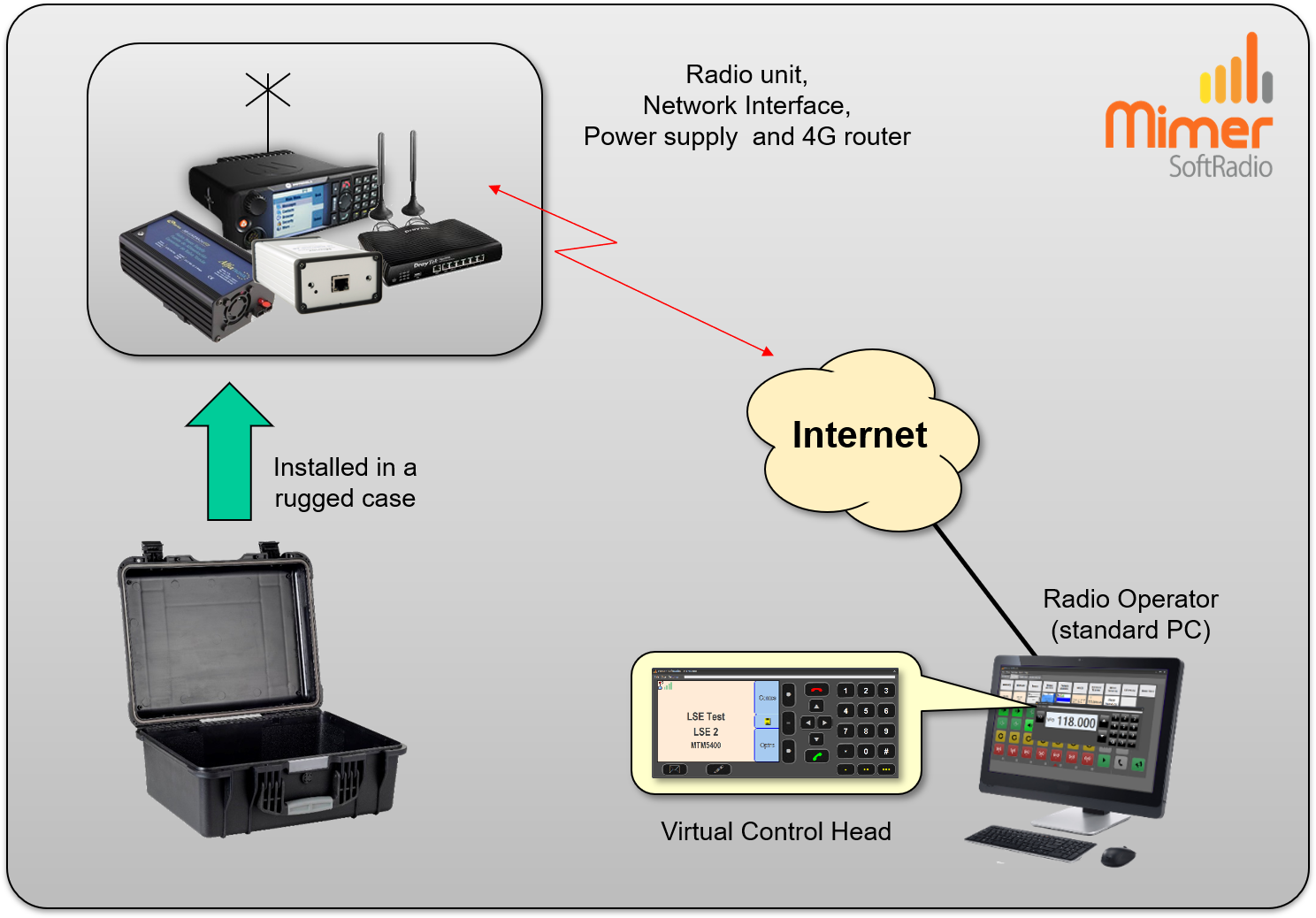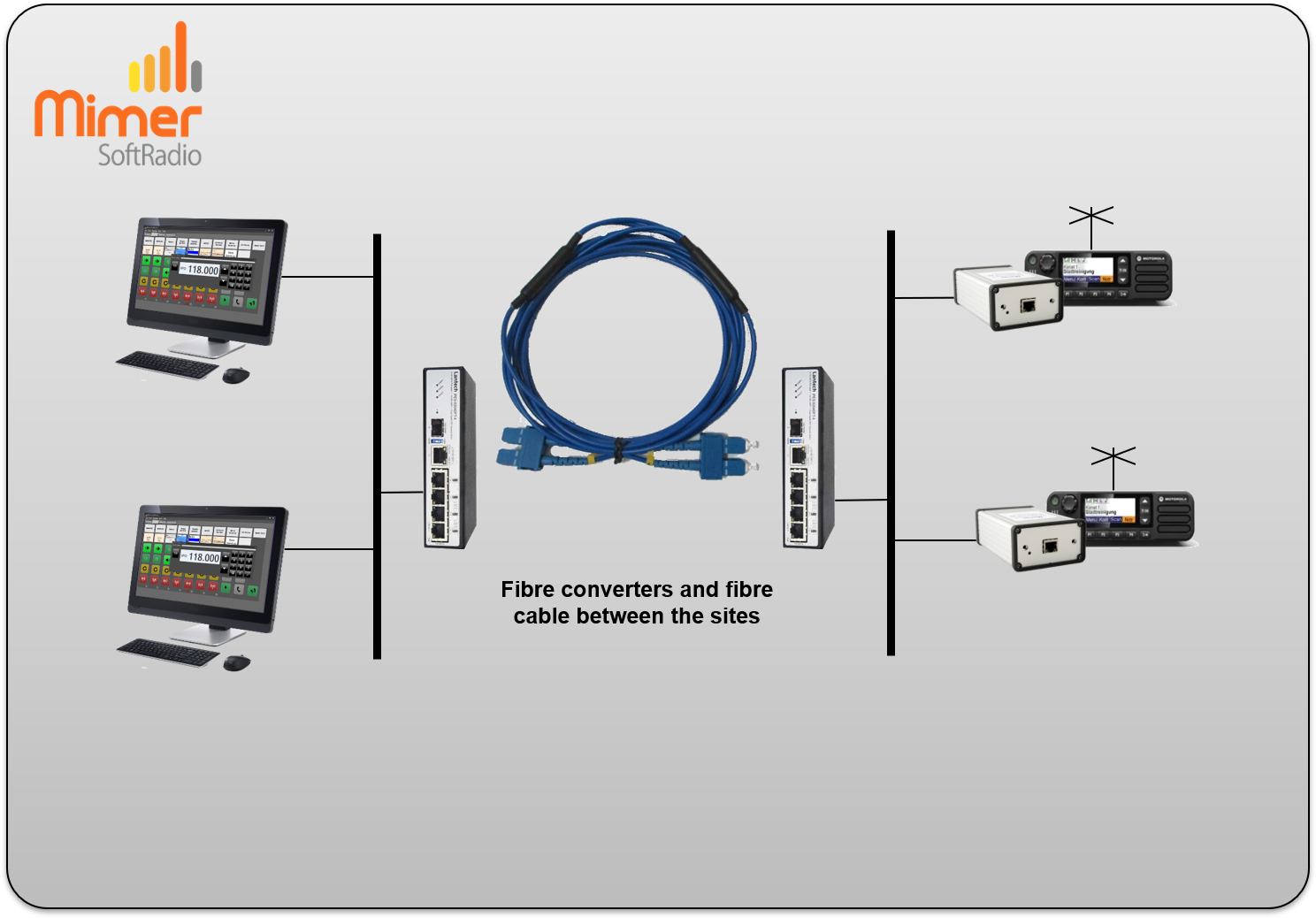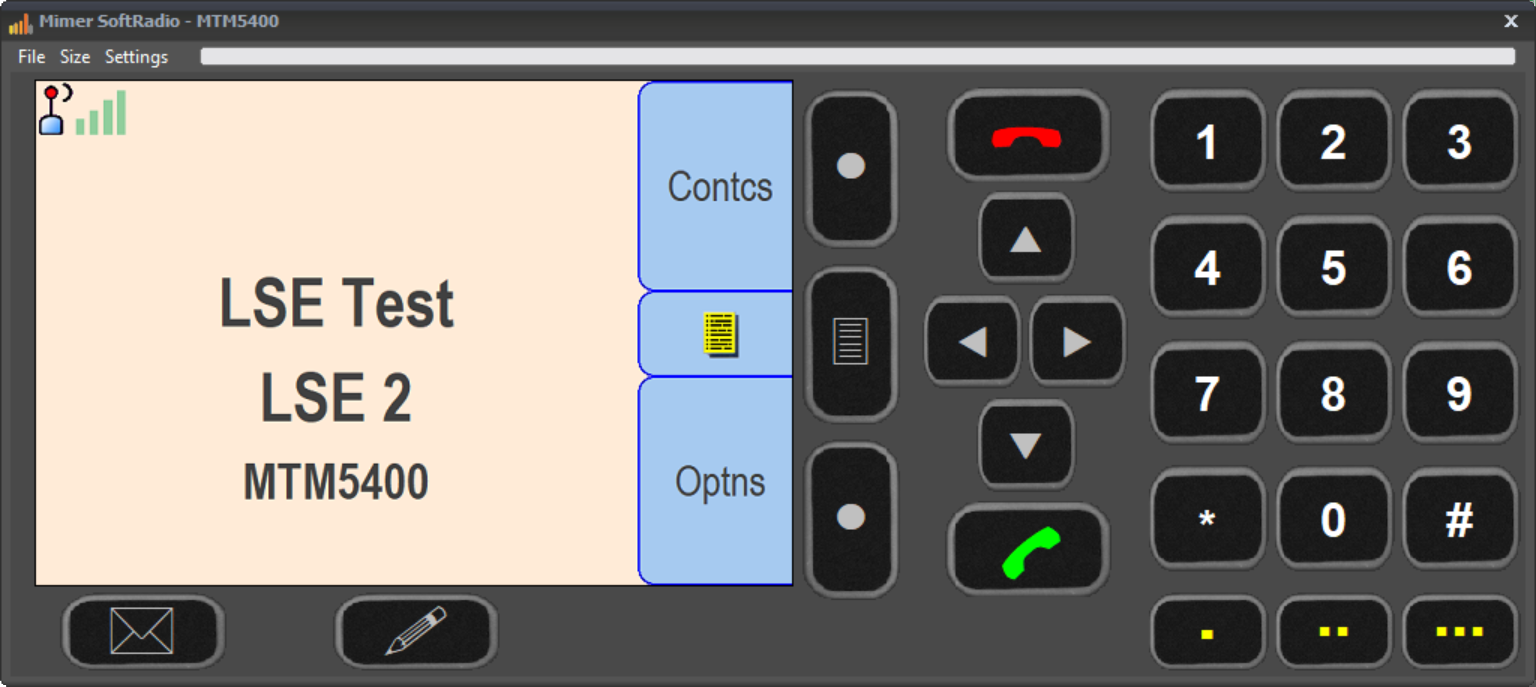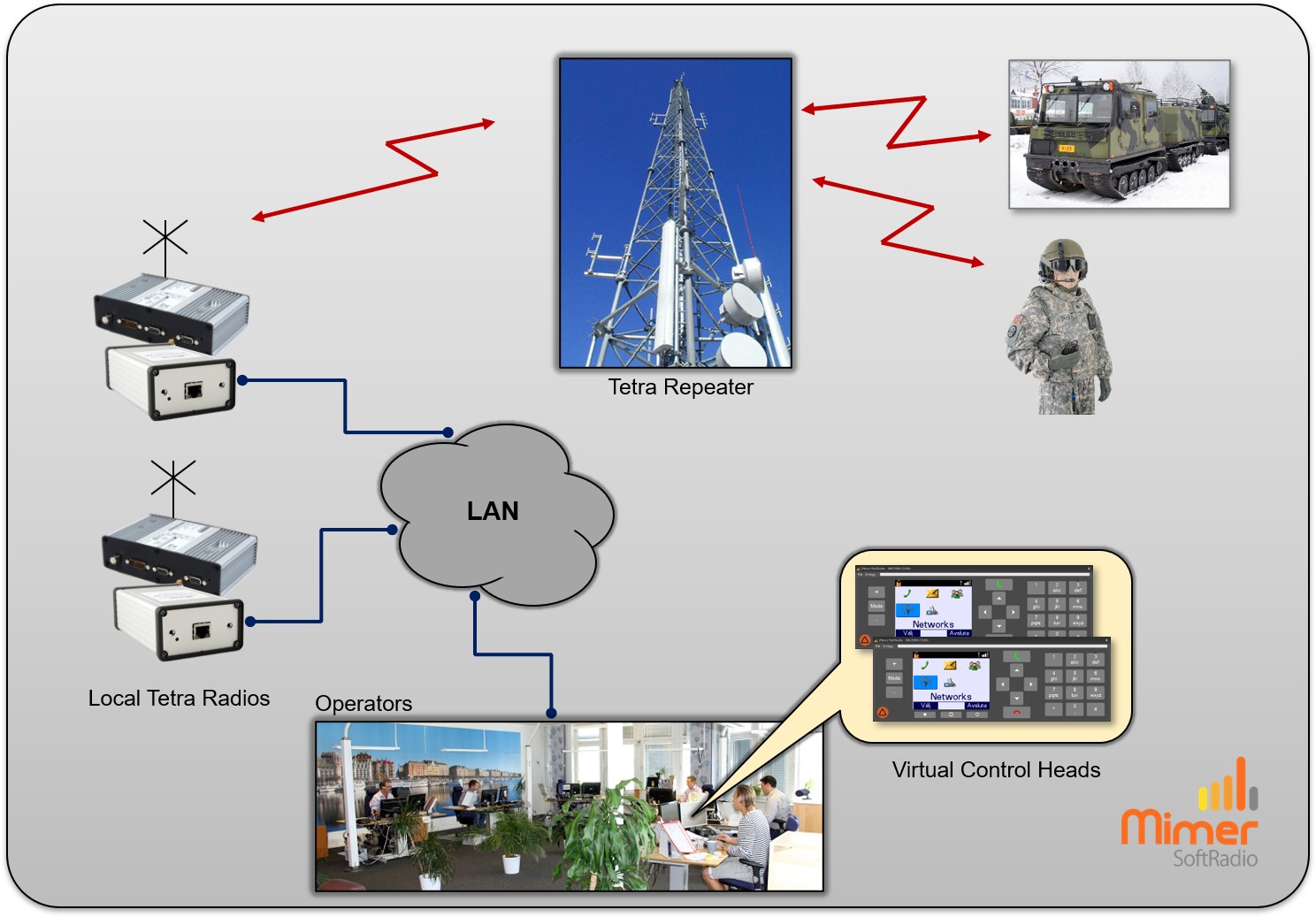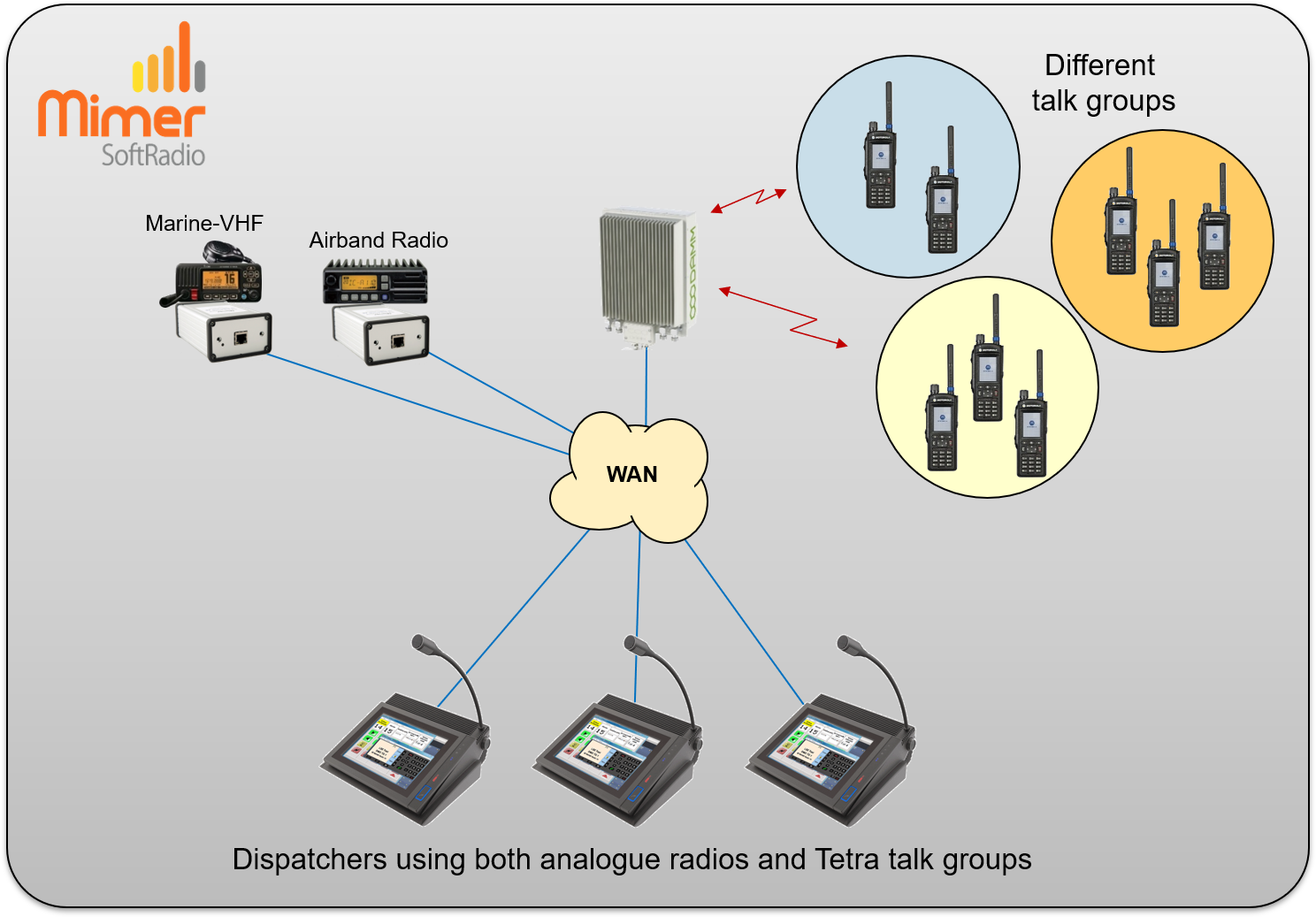Mimer SoftRadio - Military
This page shows some examples of how Mimer SoftRadio can be used in different military situations. Both local use and remote use, across the world.
As always with SoftRadio, many operators can share each radio, and every operator can use many radios. And at the same time operate phones, intercom and much more.
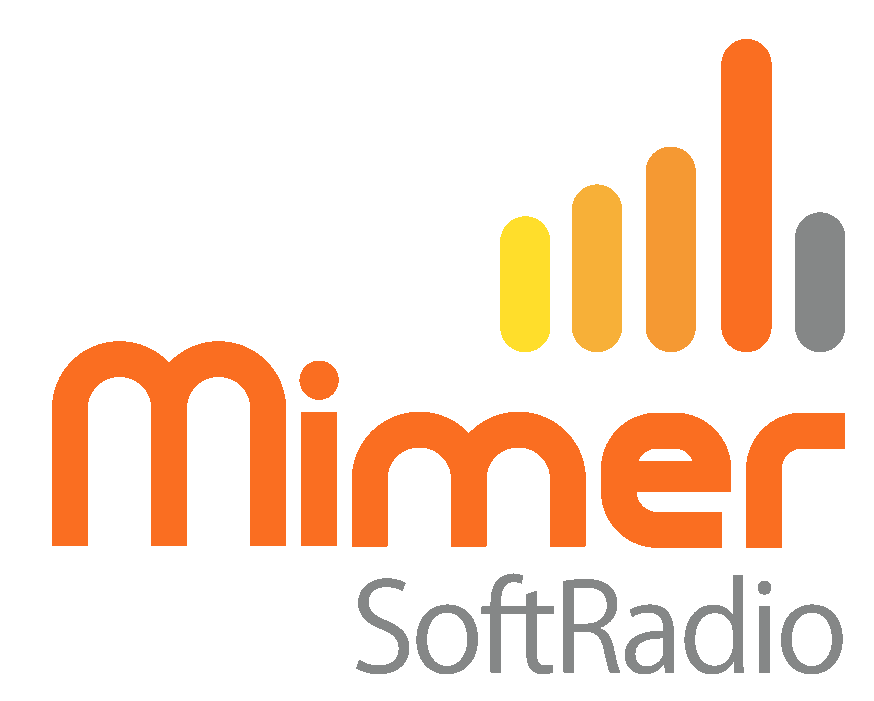
Remote control of radio systems and more
This page summons up many situations where radio systems are used in the military. There is always a need to remote control so that the leaders of the task can follow remotely.
Mimer SoftRadio will help you to build a small or medium size command centre without expensive leased lines and without the operators needing to learn more than how to use a mobile radio.
Mimer SoftRadio uses fixed mobile radios that are remote controlled from a PC dispatcher, or are shared between several PC dispatchers. On the dispatchers PC there is a simple to use GUI with straight forward transmit and listen keys, and when needed a virtual control head resembling the radio, pops up. If you are familiar with handling the mobile radio itself, it is just as easy to do it on the PC.
Many types of radios, phones and more, can be connected. This makes it possible for the dispatchers to handle all their communication from the same PC and the same headset.
Further down you will see examples that mix public safety radios with other radio systems and examples on how to use SoftRadio to get a higher redundancy.
Mimer SoftRadio is basically set up by connecting a network interface to each fixed radio and connecting that interface to an IP infrastructure. The interface communicates with the radio and transforms both the control of the radio and the audio into IP data traffic. The PC dispatch software works the other way around and presents the information to the user.
The only thing needed between the radio and the dispatcher is ordinary IP infrastructure. Mimer SoftRadio will work both in a local LAN, a large WAN and/or over the Internet.
Since the intelligence is distributed to the network interface and the dispatch software, the system needs no central processor, making it very robust and much less vulnerable than other systems.
Please read more on the web pages and also visit the download pages for brochures and technical information. Links can be found in the menus above.
Useful options and add-ons to SoftRadio
Voice recording
Through the option Mimer VoiceLog all audio in the SoftRadio system can be recorded.
Read more here.
Phone connection
Phones can be connected to the SoftRadio dispatcher so that both radio and phone calls can be handled from the same software and headset.
Read more here.
Cross patching
Radio channels and radio/phone can be patched by the dispatcher so that groups that normally can’t hear each other suddenly can work together.
Read more here.
DSC signalling
For marine systems, DSC signalling can be used both to and from the dispatchers.
Read more here.
PA and intercom
Special interfaces are available for intercom functions between operators and for use with PA speaker systems.
Read more here, and here.
Satellite connection
Any IP connection can be used, even satellite. We have special servers to handle the jitter and latency that satellite connections have.
Read more here.
Map positioning
For radios with a built in GPS we have the Mimer MapView system that will present the radios on a map.
Read more here.
Dispatcher accessories
We have special made table top microphones and other accessories to make the dispatcher job easier.
Read more here.
Custom made functions
Through the use of scripts we can custom design functions for demanding dispatchers.
Read more here.
AudioAdvanced
Troup Radio
Within the military both old analogue technique and modern digital systems function in parallel. Sometimes new analogue systems are used during training by the simple reason that they are so much cheaper to buy (COTS), and fast to deploy.
With Mimer SoftRadio all types of radio, both analogue and digital, can be remote controlled from both fixed and mobile command centres. They can be monitored at the same time and also transmitted on at the same time. And they can be cross patched together.
The radios used by the dispatchers can also be a mix of local radios and remote controlled radios, even from a totally different part of the country.
AudioAdvanced
Having Troups Overseas
At an incident abroad, radios placed there can be connected over IP and satellite so that a command centre in the home country can follow the incident or even lead it.
Regardless of the type of radio system at the incident site, a remote control can be setup over the Internet or over satellite, so that operators “at home” can be part of the conversations.
Most types of radios can be used and other applications like phone, intercom and PA can be connected as well as audio recording.
AudioAdvanced
Small Command Centre
Many have small command rooms where they place one or two mobile radios on a table. By adding a network interface to these radios and connecting to the local LAN, many more can share those radios, through their PC´s equipped with Mimer SoftRadio.
It gives a much higher flexibility where many more have access to the radios.
In a Tetra system, if you also place the radios in a high up position with a short aerial cable you will get a good coverage for DMO and repeater mode if the Tetra network would go down.
Organisations that have their own safe WAN network between their centres, can even cross connect their fixed radios between centres. If the local radio network goes down and their WAN is still working, they can continue to work through linked radios and dispatchers.
In the example here, the dispatcher in Command Centre A can communicate with a car at Command Centre B, although the radio infrastructure is down. He can also remotely set any fixed Tetra mobile into repeater mode without the need to travel to where it is placed.
AudioAdvanced
Airfields
Both air band radios and ground radios can be remote controlled with SoftRadio. This means that the operator at the airfield can use the same PC and headset for all his communications.
The radios connected can be a mix of local radios and remote radios. An operator at one airfield can easily control radios also at many other airfields. Useful at low traffic hours to minimize staff at some airfilds.
Read more about air fields on this page.
AudioAdvanced
Onboard Ships
Onboard the largest ships in the Swedish Coast Guard fleet there is a separate command and control room that is manned when taking care of an incident. It is separated from the ships bridge in order for them not to disturb one another.
In this command centre there is obviously a large need of communicating with the world around. Not just through one radio system but through many radio systems and phone systems that shall be used separately or in combination.
In two operator PC´s with touch screens, goose neck microphones, speakers and headsets the following systems are brought together by Mimer SoftRadio:
- 2 Tetra mobiles
- 3 Marine VHF Radios
- 1 Airband VHF Radio
- 1 UHF radio for on-board Communication
- 1 Analogue phone line connected to the ships onboard PABX
Most of the radios are placed in a radio room high up in the mast where they can have good coverage and a short aerial lead for low loss. Down from the mast to the command room there is only need for one common CAT5 cable, making the installation very easy.
All radios and the phone can be operated from both dispatch PC´s. Either through speaker/microphone or through a headset.
At this point all radios and dispatchers in the system are on-board the ship. However in a future this can be expanded through a suitable IP connection. Both land based radios and dispatchers can be connected as well as connecting several ships together. The system can also be expanded with audio recording.
AudioAdvanced
Command and Control Vehicles
Operators in Command and Control vehicles have a need to communicate in a lot of different systems, and will of course want to use the same control panel and headset for all communication.
In the command vehicles for the Stockholm Fire brigade there where first eight analogue radios, three mobile phones and intercom in each vehicle. This has now been updated to the public safety Tetra network used in Sweden and the number of radios are less than before.
All systems are operated in parallel from three touch screen panels and audio can be selected between headset or speaker and microphone.
Also other counties in Sweden use Mimer SoftRadio in their command vehicles for both radio and phones.
Apart from the dispatchers inside the vehicle, an expansion is possible with for example a tablet PC outside the vehicle through cable or Wi-Fi. This can be used by a dispatcher or commander with full function or just for listening in on the audio.
Through the use of for example a 4G/LTE link more external dispatchers can be connected to the radios in the vehicle and get the same possibilities as the dispatchers in the vehicle. On top of that they get an intercom channel between the inner and the outer command centre.
AudioAdvanced
Rapid Deployment
Users might suddenly find themselves involved in a large incident with lots of personnel, but in an area where the radio network does not have as much capacity as it does in the cities. Most public safety nets have a very good geographical coverage, but can of course not offer capacity for hundreds of users at the same time everywhere.
For example when helping out at a forrest fire, at a demonstration or when guarding a border.
A simple way to strengthen the radio net is to place a couple of fixed mobile radios in repeat mode at the incident site. Then more talk groups can be used at site. By connecting these fixed radios through Mimer SoftRadio to the Command Centre the dispatchers can follow all radio traffic and also use these extra recourses.
The radios and modems can be packaged in rugged cases for easy transport and rapid deployment at site.
To build permanent links between any two radio systems the X-Link interface can be used.
Read more here.
AudioAdvanced
Fibre connections
At some installations it is not allowed to use copper cables. All audio and all control needs to be done over fibre.
Since the remote control in a SoftRadio system is based on IP it is easy to add a fibre converter to the system and thereby skip the copper cables.
In a SoftRadio system operation is done from one or more PC dispatchers as usual. And the radios are connected to network interfaces. Many operators can operate many radios.
In a SoftLine setup the radios standard control panel and microphone are used instead of a PC. The big difference is that this becomes a one to one scenario with one radio and one operator.
Read more on SoftLine remote of the Motorola MTM5500 here.
AudioAdvanced
Tetra Systems
Many military radio systems today are shared with public safety and therefor use the Tetra standard. Some organisations also have their own Tetra systems.
SoftRadio have full remote control of donor radios from both Motorola and from Sepura. You can remote control the radios just as if you where sitting in front of them. This means that although the Tetra system is in one part of the country, you can have one or more radios there that you remote control from your PC sitting “anywhere”.
SoftRadio also has the possibility to connect directly into a Tetra infrastructure from Damm. With this solution, no donor radios are needed, all remote control functions needed are there.
In both cases SoftRadio can connect other types of radios and other equipment giving the operator the possibility to remote all his radios from one operator PC and maybe also cross connect the radios and record the audio.

